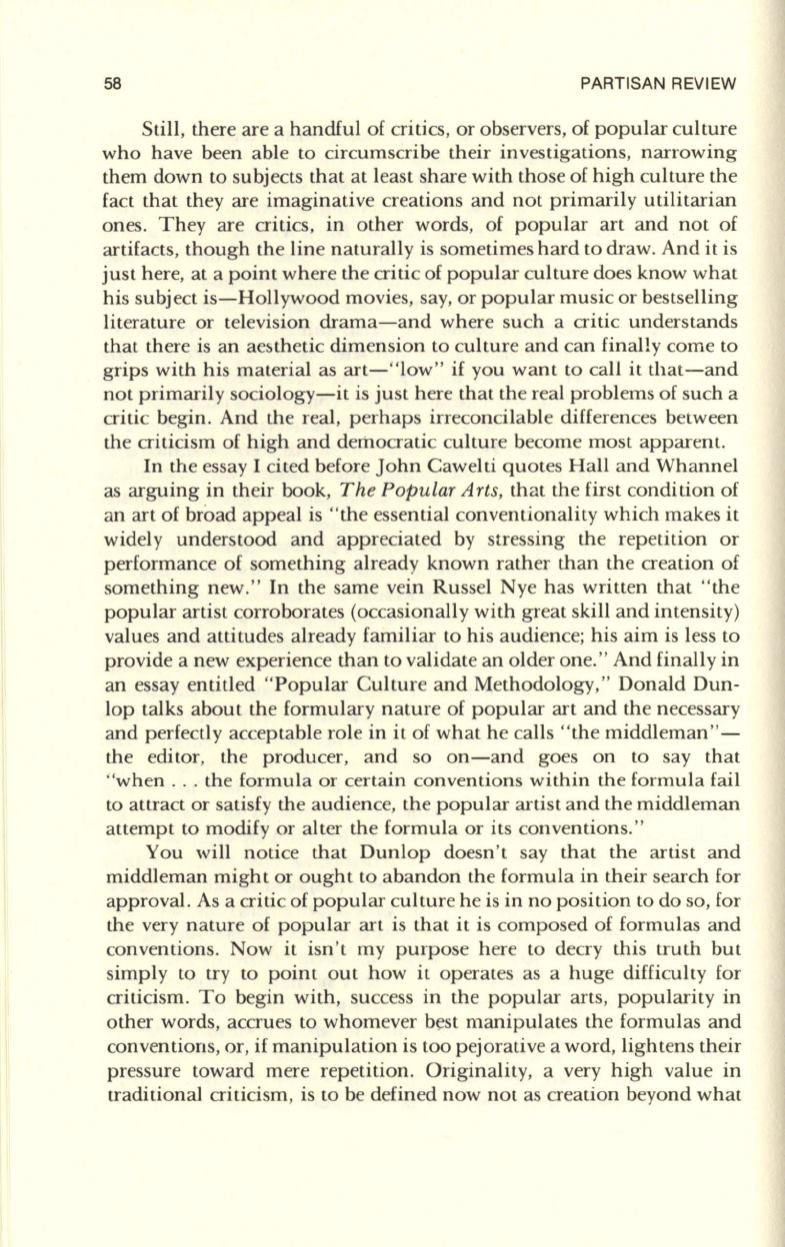
58
PARTISAN REVIEW
Still, there are a handful of critics, or observers, of popular culture
who have been able to circumscribe their investigations, narrowing
them down to subjects that at least share with those of high culture the
fact that they are imaginative creations and not primarily utilitarian
ones. They are critics, in other words, of popular art and not of
artifacts, though the line naturally is sometimes hard to draw. And it is
just here, at a point where the critic of popular culture does know what
his subject is-Hollywood movies, say, or popular music or bestselling
literature or television drama-and where such a critic understands
that there is an
ae~thetic
dimension to culture and can finally come to
grips with his material as art-" low" if you want to call it that-and
not primarily sociology-it is just here that the real problems of such a
critic begin. And the real, perhaps irreconcilable differences between
the criticism of high and democratic culture become most apparent.
In the essay I cited before John Cawelti quotes Hall and Whannel
as arguing in their book,
The Popular Arts,
that the first condition of
an art of broad appeal is "the essential conventionality which makes it
widely understood and appreciated by stressing the repetition or
performance of something already known rather than the creation of
something new. " In the same vein Russel Nye has written that "the
popular artist corroborates (occasionally with great skill and intensity)
values and attitudes already familiar to his audience; his aim is less to
provide a new experience than to validate an older one. " And finally in
an essay entitled "Popular Culture and Methodology, " Donald Dun–
lop talks about the formulary n ature of popular art and the necessary
and perfectly acceptable role in it of what he calls " the middleman" –
the editor, the producer, and so on-and goes on
to
say that
"when ... the formula or certain conventions within the formula fail
to attract or satisfy the audience, the popular artist and the middleman
attempt to modify or alter the formula or its conventions. "
You will notice that Dunlop doesn 't say that the artist and
middleman might or ought to abandon the formula in their search for
approval. As a critic of popular culture he is in no position to do so, for
the very nature of popular art is that it is composed of formulas and
conventions. Now it isn't my purpose here to decry this truth but
simply to try to point out how it operates as a huge difficulty for
criticism. To begin with, success in the popular arts, popularity in
other words, accrues to whomever best manipulates the formulas and
conventions, or, if manipulation is too pejorative a word, lightens their
pressure toward mere repetition. Originality, a very high value in
traditional criticism, is to be defined now not as creation beyond what


